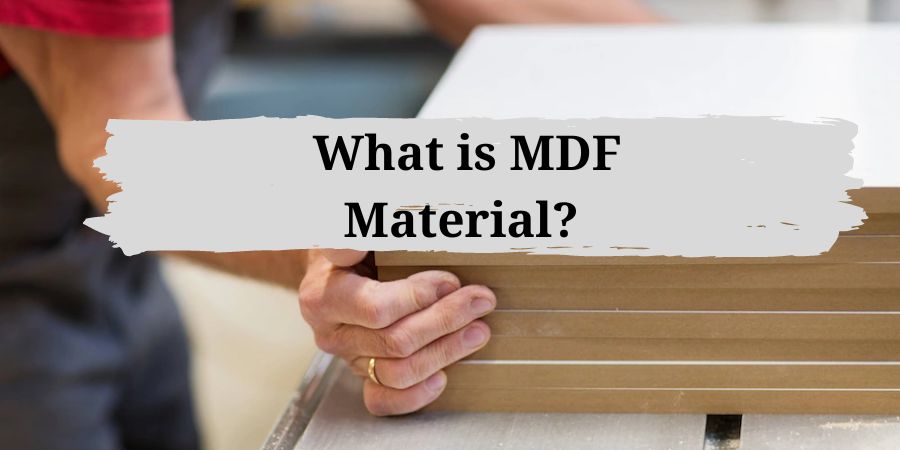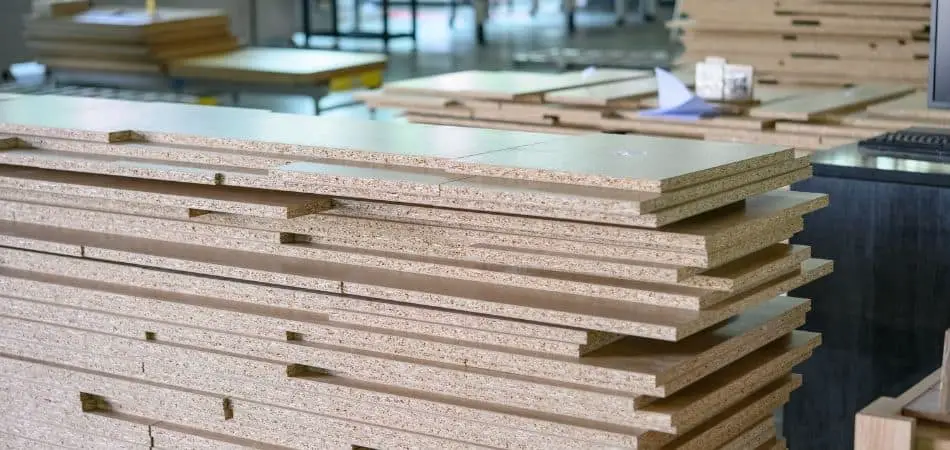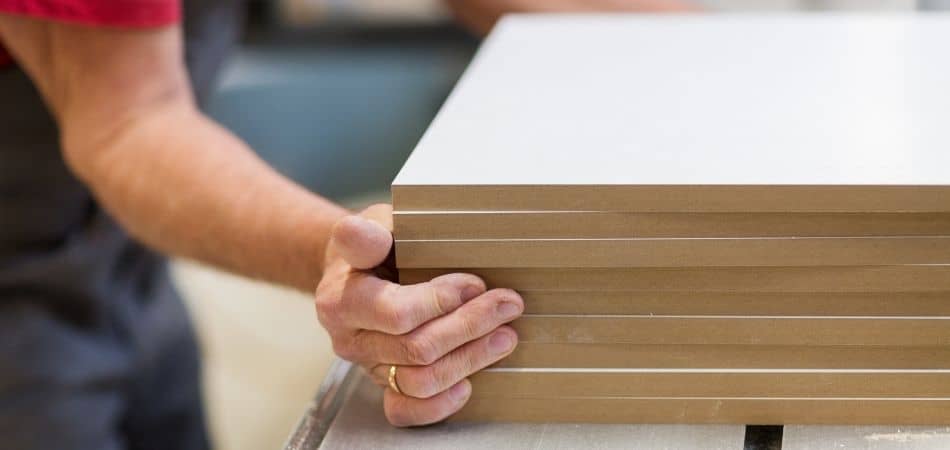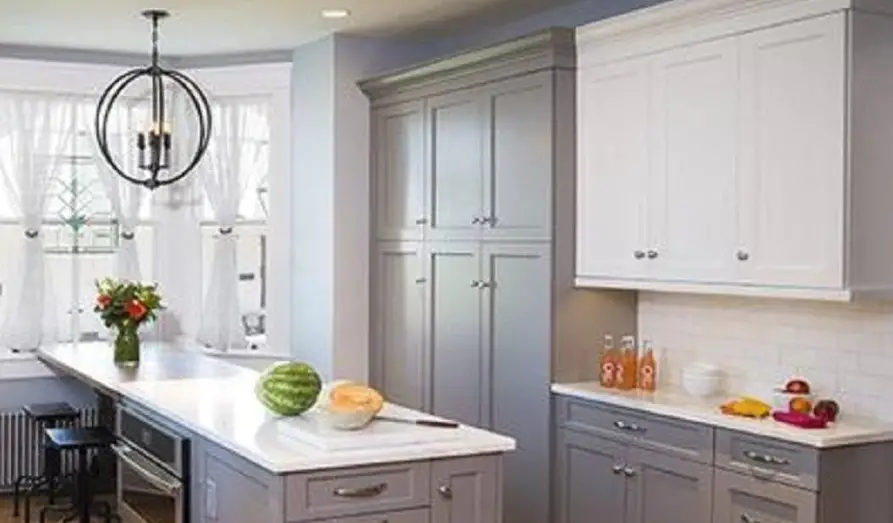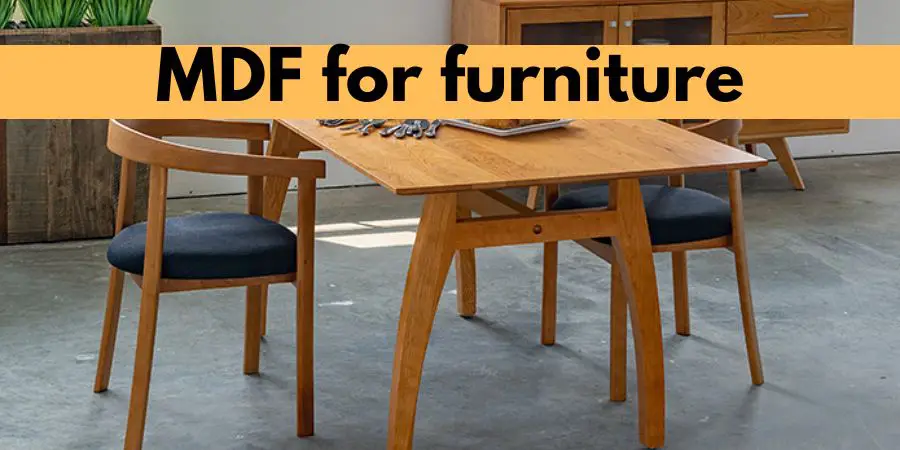In this blog post, we will take a closer look at what MDF is, how it is made, its properties, and its various applications.
Table of Contents
What is MDF Material?
Medium-density fibreboard, commonly known as MDF, is a popular type of man-made wood.
Made by breaking down hardwood or softwood residuals into wood fibers, often in a defibrator, combining it with wax and a resin binder, and forming panels by applying high temperature and pressure.
The resulting material has a uniform texture, is easy to cut and shape, and has no visible wood grains, knots, or voids.
This makes it an attractive alternative to natural wood and other types of composite wood products such as particleboard and plywood.
Physical properties
Sure, here is a table of the physical properties of MDF:
| Physical Property | Description |
|---|---|
| Composition | Typically made up of 82% wood fiber, 9% urea-formaldehyde resin glue, 8% water, and 1% paraffin wax |
| Density | Typically between 500 and 1,000 kg/m3 (31 and 62 lb/cu ft) |
| Strength | MDF has good tensile and flexural strength, but low-impact strength |
| Hardness | MDF is softer than most hardwoods but harder than some softwoods |
| Moisture Resistance | MDF is not very moisture-resistant and can swell or warp when exposed to water |
| Machinability | MDF can be easily machined, drilled, and cut with standard woodworking tools |
| Finishing | MDF has a smooth surface and can be painted or laminated, but does not take stains or finishes as well as real wood. |
| Fire Resistance | MDF is combustible and can contribute to the spread of fire |
History of MDF
Medium-density fiberboard (MDF) was first developed in the 1960s by researchers at the Forest Products Laboratory in Madison, Wisconsin.
The initial goal was to create a product that could use waste wood chips and sawdust, which were previously considered unusable.
The first MDF panels were made using a wet process that involved pressing wood fibers and glue together under high pressure and heat. These early MDF panels had a high density and were used primarily in the furniture industry.
In the 1970s, a dry process was developed for making MDF, which involved using a lower-density fiber and a different type of glue.
This new process allowed for faster production and lower costs, and it made MDF more widely available for use in construction and other industries.
Since then, MDF has become a popular building material due to its versatility, affordability, and ease of use.
It is used in everything from furniture and cabinetry to flooring and decorative molding.
Despite some concerns about its environmental impact and health hazards associated with its production, MDF continues to be a widely used material in many industries.
How are MDF boards made?
Here are the step-by-step instructions for making MDF:
Preparing the wood chips:
Wood chips are obtained from various wood species and sorted based on size and quality.
The chips are then cleaned of debris and contaminants.
Fiber extraction:
The wood chips are then processed in a defibrillator, which is a machine that uses two counter-rotating discs with grooves to separate the wood fibers from each other.
The fibers are then collected into a pulp.
Adding binders:
Wax is injected into the pulp to improve moisture resistance, and a urea-formaldehyde resin is added as the main bonding agent.
The resin initially helps reduce clumping.
Forming the MDF:
The pulp is then dried and compressed into small plugs using a screw feeder.
These plugs are then heated for 30–120 seconds to soften the lignin in the wood and fed back into the defibrator.
Sheet forming:
The resulting dry fibers are sucked into the top of a “pendistor,” which evenly distributes the fibers into a uniform mat below it, usually of 230–610 mm thickness.
The mat is then recompressed and sent straight to a continuous hot press or cut into large sheets for a multiple-opening hot press.
Hot pressing:
The hot press activates the bonding resin and sets the strength and density profile.
The pressing cycle operates in stages, with the mat thickness being first compressed to around 1.5 times the finished board thickness, then compressed further in stages and held for a short period.
This gives a board profile with zones of increased density near the two faces of the board and a less dense core.
Cooling and Finishing:
After pressing, MDF is cooled in a star dryer or cooling carousel, trimmed, and sanded.
In certain applications, boards are also laminated for extra strength.
Environmental considerations:
As manufacturers are being pressured to come up with greener products, they have started testing and using nontoxic binders.
New raw materials are being introduced, including straw and bamboo, which are becoming popular fibers because they are fast-growing, renewable resources.
Types of MDF boards
There are several types of MDF boards available in the market. Some of the common types include:
- Standard MDF
- Moisture-resistant MDF
- Fire-resistant MDF
- Ultralight MDF
- Exterior MDF
- Veneered MDF
- Laminated MDF
- Colored MDF
- High-density MDF
- Thin MDF
Each type of MDF board has unique characteristics and is suitable for different applications. You can read from here.
Application of MDF
Some of the most common uses of MDF include furniture manufacturing, cabinetry, molding and trim, and construction.
It is also used in the production of doors, flooring, and wall panels.
Due to its smooth surface and uniform texture, MDF is a popular choice for painting and laminating.
Additionally, MDF can be easily machined and shaped, making it an ideal material for decorative elements and intricate designs. Read more about the uses of MDF.

